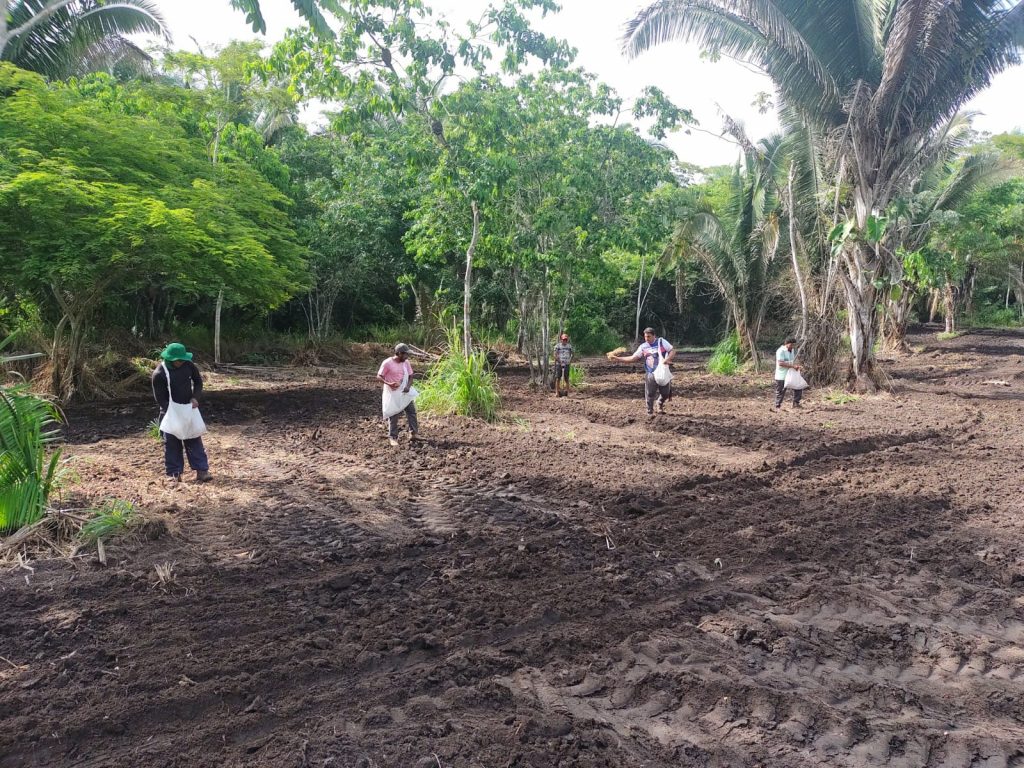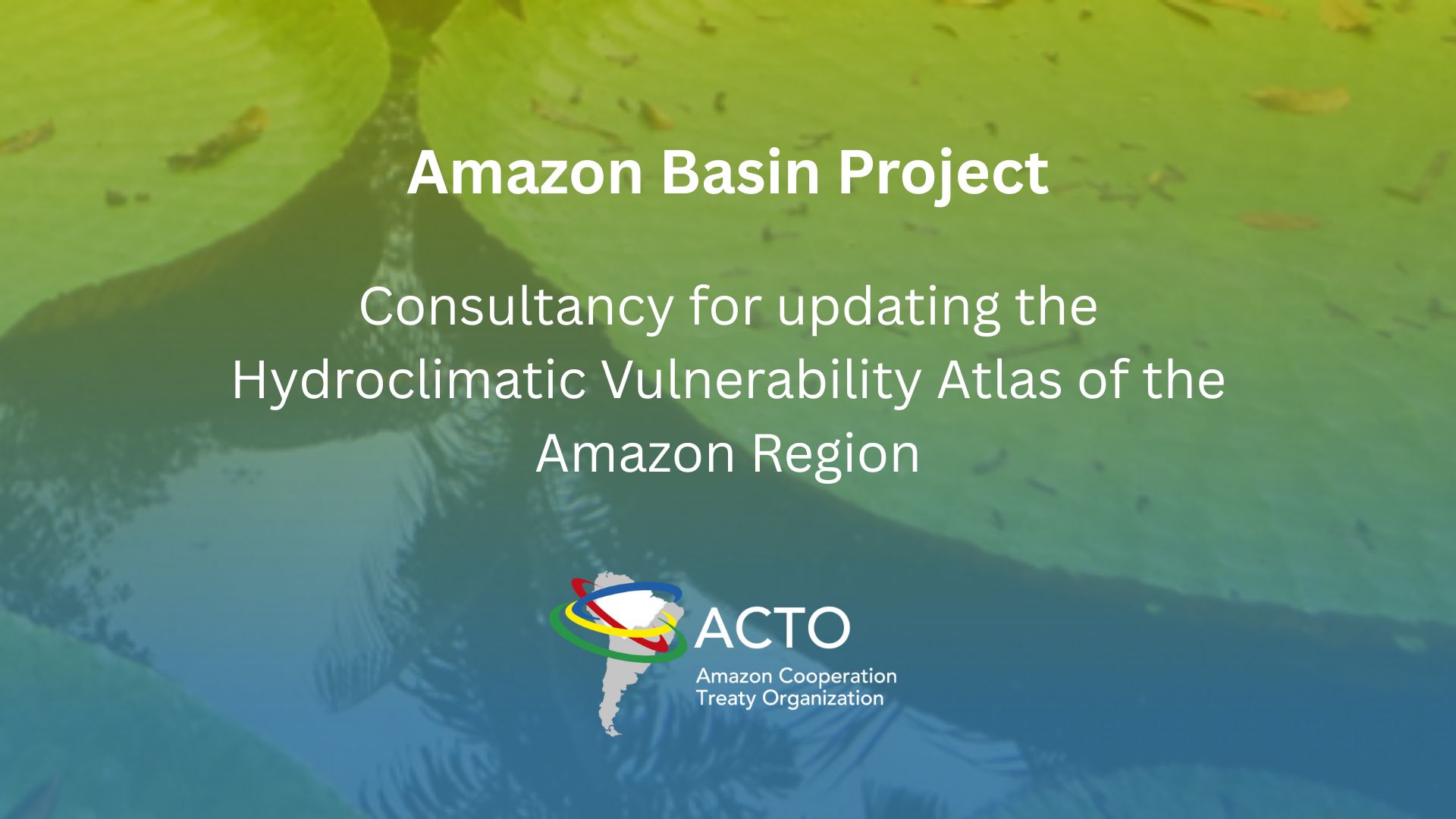On November 17, the 4th Technical Meeting of the Coordinators of the National Coordination Units of the Amazon Basin Project was held virtually. This project is executed by ACTO, with implementation by UNEP and financing from GEF. The project implements actions of the Strategic Actions Program (SAP), which constitutes the regional strategy of the ACTO Member Countries for Integrated Water Resources Management (IWRM) of the Amazon Basin.
The welcome to the participants of the 4th Technical Meeting was given by Ambassador Carlos Lazary, Executive Director of ACTO, as well as by Isabelle Vanderbeck, Program Manager of UNEP, and Maria Apostolova, Regional Project Coordinator.
The technical meetings are held periodically to deepen the approach and generate working bridges between the Coordinators and the National Assistants, members of the National Coordination Units of the Project, and to ensure a common understanding of progress and planning for the execution of national and regional activities.
The 4th Technical Meeting was attended by more than 50 professionals who shared progress in the implementation of the PAE in their countries, as well as lessons learned and challenges encountered, highlighting activities carried out within the framework of national and binational interventions aimed at promoting IWRM in the region.
National Workshops for PAE Implementation
In his opening speech, Ambassador Lazary congratulated and thanked the countries for the planning and holding of the National Workshops for the Implementation of the Strategic Actions Program, “where the common denominator was multisectoral participation and reaffirmation of political and technical commitment to the implementation of the SAP and the consolidation of the National Action Plans (NAP).”
Since August, the Amazonian countries of ACTO have been holding these workshops, bringing together governments, experts, and civil society to strengthen national capacities for integrated water resources management in the Amazon Basin, combining technical and cultural dimensions and seeking to identify opportunities for regional collaboration.
During the workshops, participants develop recommendations and identify challenges and progress in the field of IWRM in each of the countries, thereby contributing to the National Action Plans.
Maria Apostolova, Project Coordinator for the Amazon Basin Project, highlighted the realization of gender equality training in each of the six workshops held to date. “These were very important moments for the implementation of the PAE by addressing a topic that is not very clearly defined in the Program, which is the inclusion of gender equality in a cross-cutting way in all activities and strategic actions.”
In this regard, more than 300 participants from the workshops held to date – in Bolivia, Colombia, Guyana, Peru, Suriname, and Venezuela – received initial training on the importance of effective participation of women in water management in the Amazon, while a total of 86 people participated in training specifically focused on the use of tools for the formulation and implementation of policies, plans, and programs, as well as projects that consider and incorporate gender perspective.
National Interventions
As part of the Amazon Basin Project, 17 interventions are planned focusing on the following themes: establishment of innovative financing mechanisms based on incentives (4 interventions); operational systems for forecasting and early warning to respond to extreme hydroclimatic events (3 interventions); solutions based on natural infrastructure (4 interventions); efficient water use and alternative supply solutions in Andean communities affected by glacier loss (2 interventions), and protection of groundwater sources to reduce flooding contamination in urban centers (4 interventions).
At the IV Technical Meeting, National Coordinators shared the results of the National Workshops held to date and the progress and challenges in the execution of interventions, as well as defined the next steps.
Bolivia highlighted the installation of two glacier monitoring stations in the Tuni reservoir and in the Condoriri basin to ensure water security for the cities of La Paz and El Alto, as well as the establishment of monitoring networks for two aquifers in the Madera river basin, responsible for supplying water to more than 1.5 million inhabitants of the cities of Santa Cruz and Sacaba.

Planting in the Terra do Meio region of the Brazilian Amazon
Suriname, as part of its intervention implementing an economic mechanism of collective incentives, highlighted the technical visit conducted to a degraded mangrove area north of Paramaribo, where forest rehabilitation is planned through payment of the socio-environmental contribution by local communities.
During the meeting, special emphasis was given to the conclusion of the Brazil-Colombia binational study on the quality of groundwater supplying the populations of Tabatinga and Leticia, twin cities located on the borders of the two countries.
Peru commented on the progress of activities related to the intervention that will install monitoring stations in the Andes, directly benefiting a population of 30,727 people and indirectly benefiting over 220,000 people.

Field evaluation in the Apolobamba and Carabaya glaciers in the Peruvian Andes
The other countries mentioned the measures taken to date to initiate activities related to their national interventions.
Integrated Monitoring Systems
During the meeting, the Work Plan for the conceptualization, consolidation, and operation of a series of interconnected, compatible, operational, and agreed monitoring systems for the entire Amazon Basin was presented.
“Naziano Filizola, the Consultant responsible for the activity, explained, “These systems will integrate data from all countries, generating indicators that allow for decision-making, water resources management, conservation, and protection of aquatic ecosystems in the Amazon Basin, and compliance with international agreements.”
The project aims to consolidate and operate, according to international technical protocols, an Integrated Water Resources Monitoring System. This system will integrate and consolidate the Regional Water Quality Network, including a set of laboratories, and the Amazon Hydrometeorological Network, which measures levels, flow, and rainfall indices, already operating in the Amazon Networks Module of the Amazon Regional Observatory (ORA). It will also initiate a joint Monitoring Program for erosion and sediment transport processes.
The data from the Integrated Monitoring System will be available on an Integrated Regional Information Platform on IWRM in the Amazon Basin, which will gather data from national water resources information systems and will be connected to the Amazon Regional Observatory (ORA), a computer platform hosted on the OTCA website.
To promote the sustainability of the Integrated Water Resources Monitoring System at the national and regional levels, the Project foresees the development of a technical training program for the countries and the elaboration of a sustainability plan.
Regional Mercury Pollution Overview
The UCR also presented the first steps of a study that will provide a Regional Overview of the current state of mercury pollution in the Amazon Region. In his presentation, consultant Jérémie Garnier informed that the study is based on quantifying emission and release sources and identifying areas of risk and vulnerability to pollution.
This study will also generate a monitoring strategy for the main mercury-emitting activities that play a significant role in the basin and a Pollution Atlas. Finally, a proposal for technical training for standardized monitoring and analysis of mercury distribution in the Amazon Basin will be developed, along with a course aimed at professionals from the eight Amazonian countries.
Related news
Post
28 de November de 2025
Water is the central element through which most of the impacts of climate change manifest themselves: more intense droughts, extreme [...]
Post
24 de November de 2025
On October 23 and 24, 2025, the Third Meeting of the Ad Hoc Amazon Water Culture Group (GCA) was held [...]
Post
3 de November de 2025
The Amazon Cooperation Treaty Organization (ACTO) announces a call for specialized technical services to update the Atlas of Hydroclimatic Vulnerability [...]




